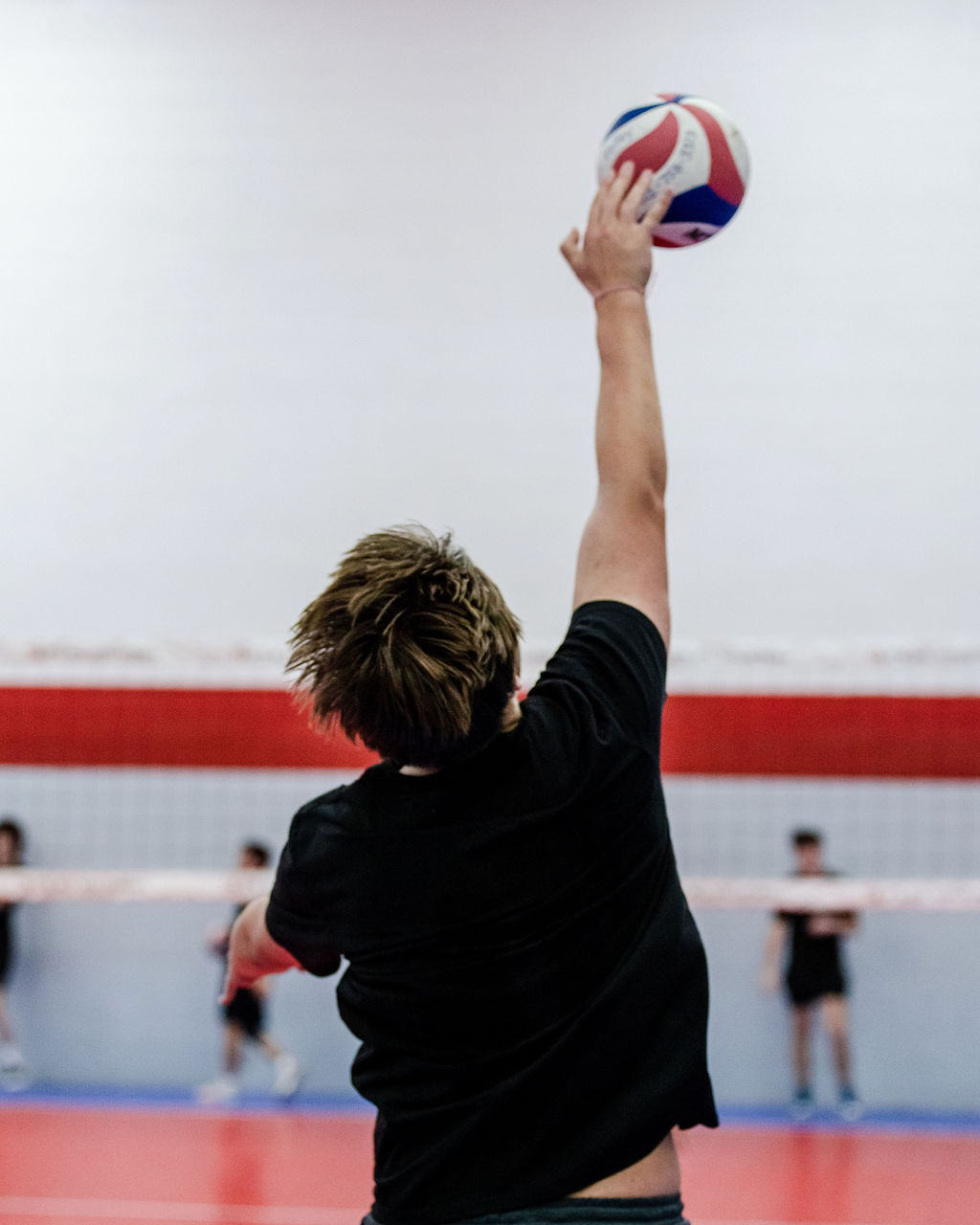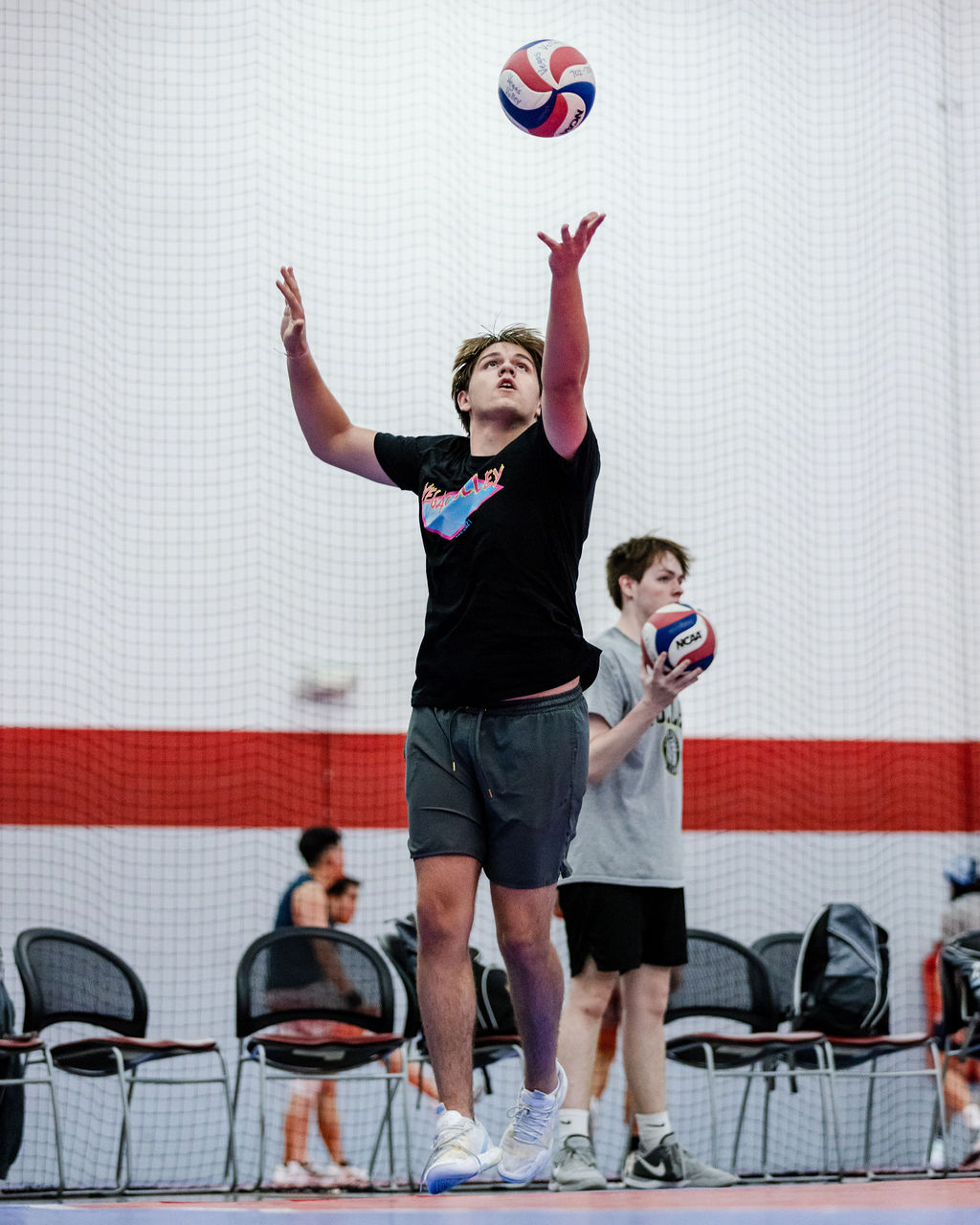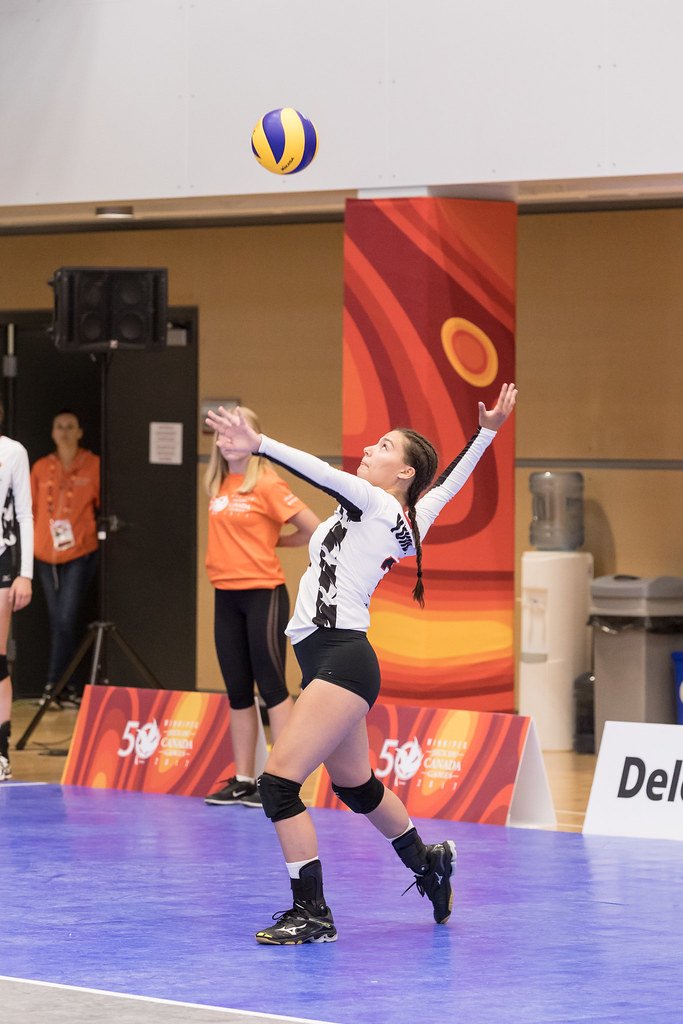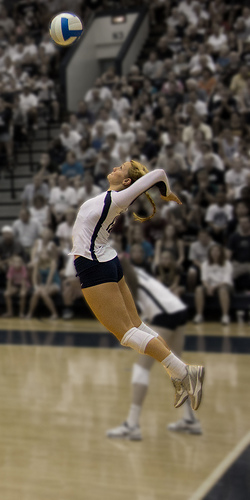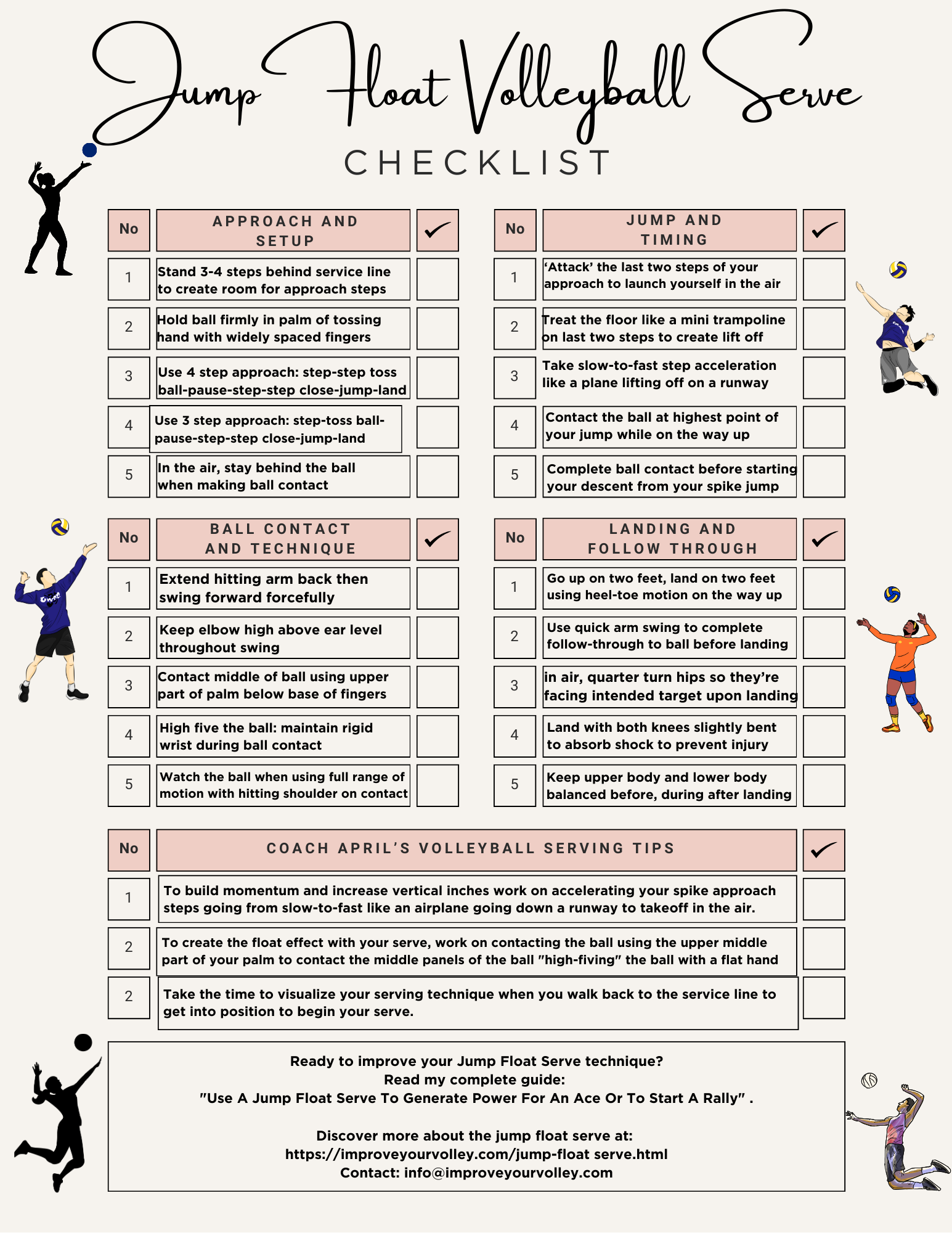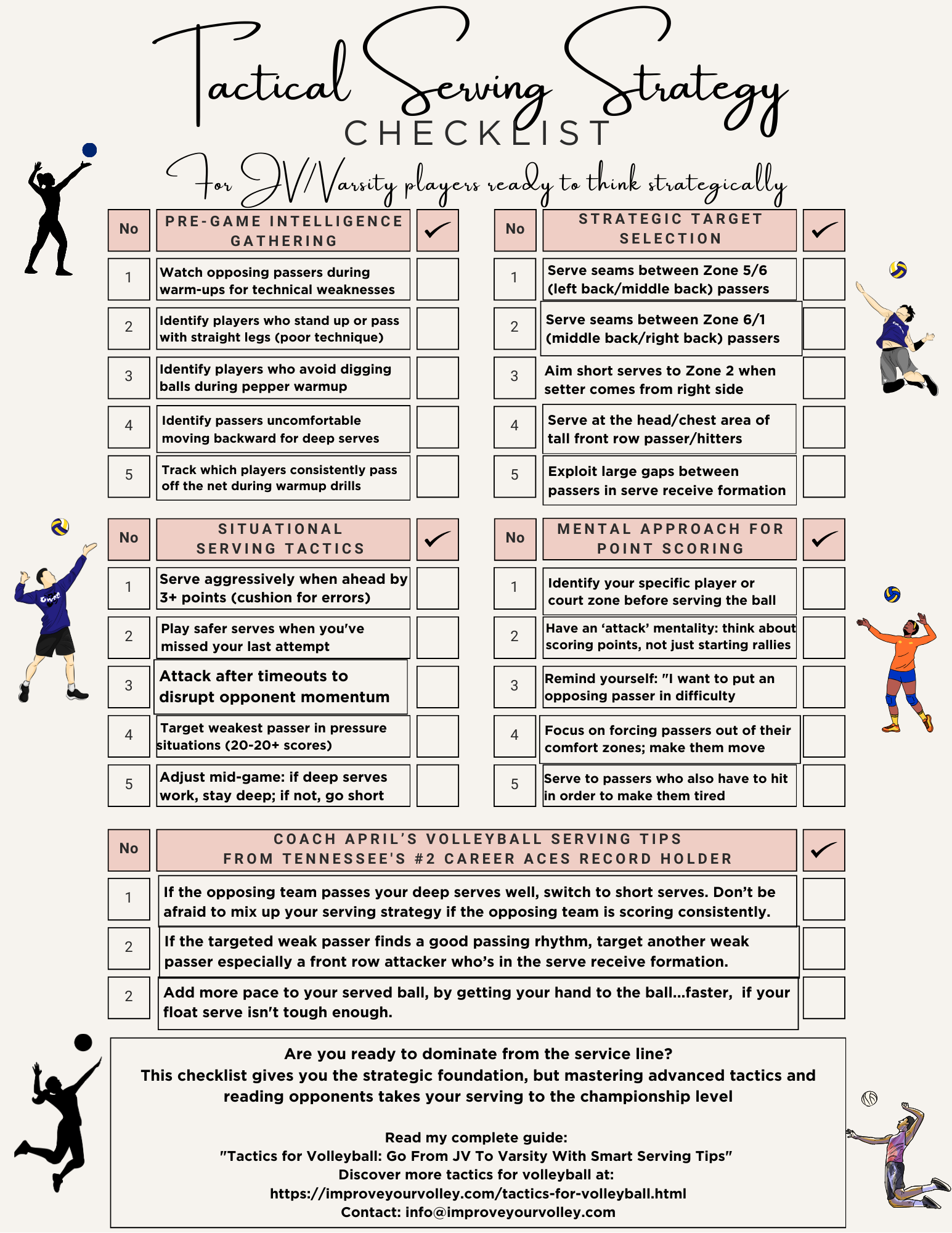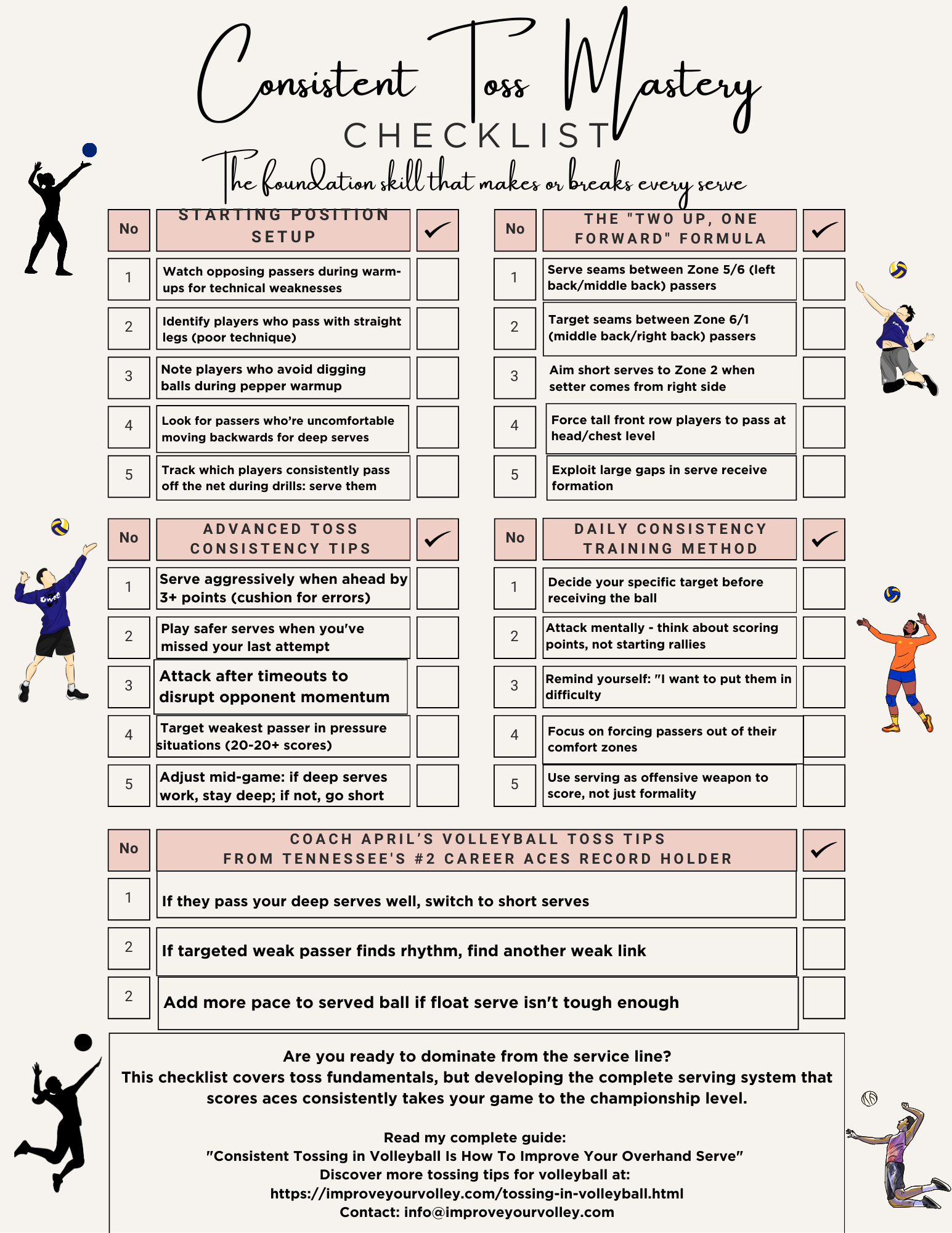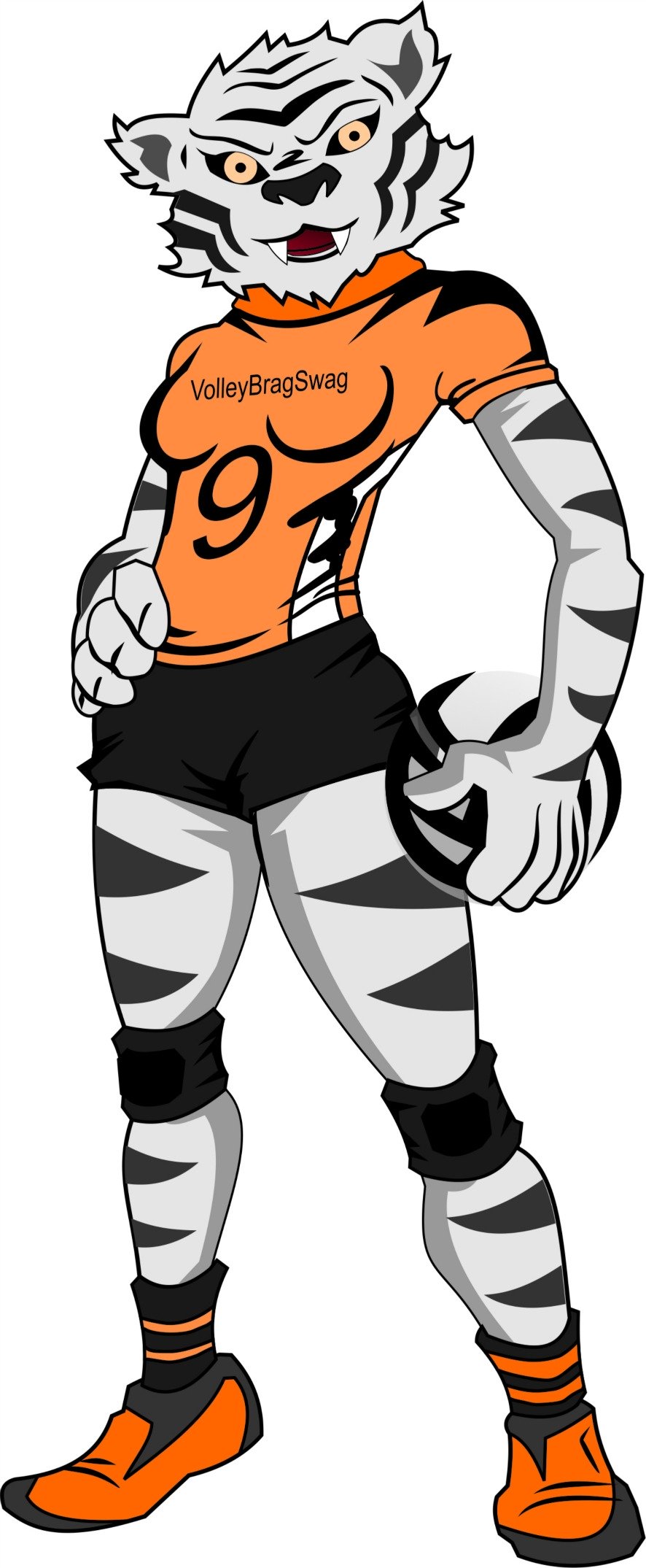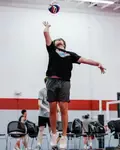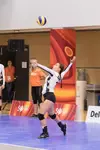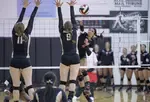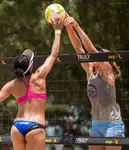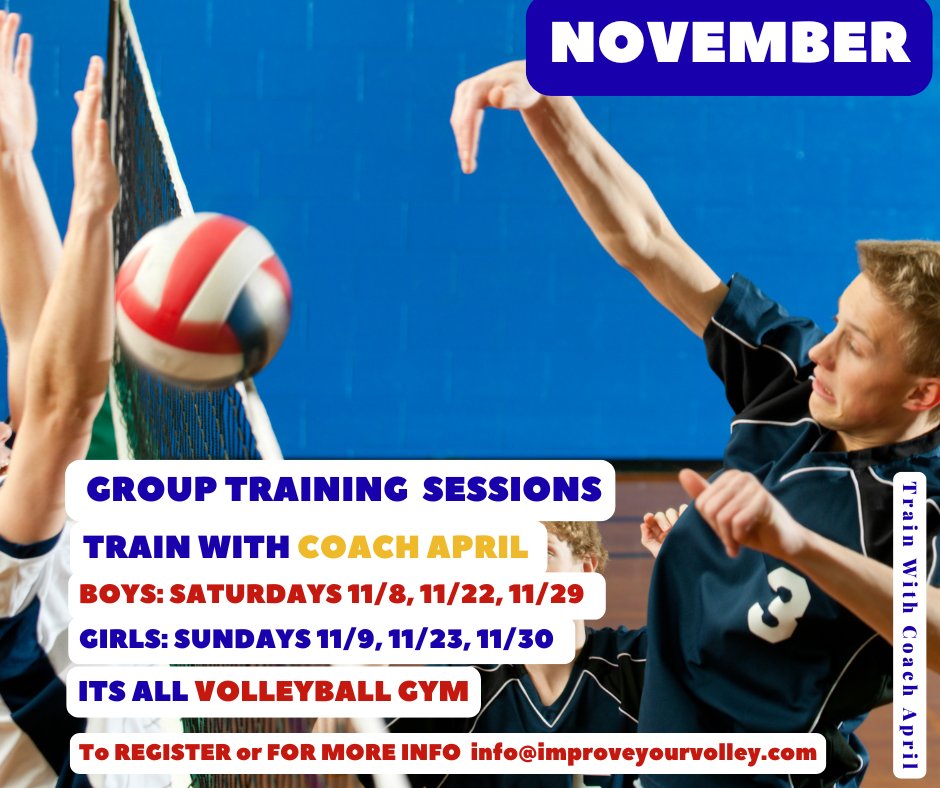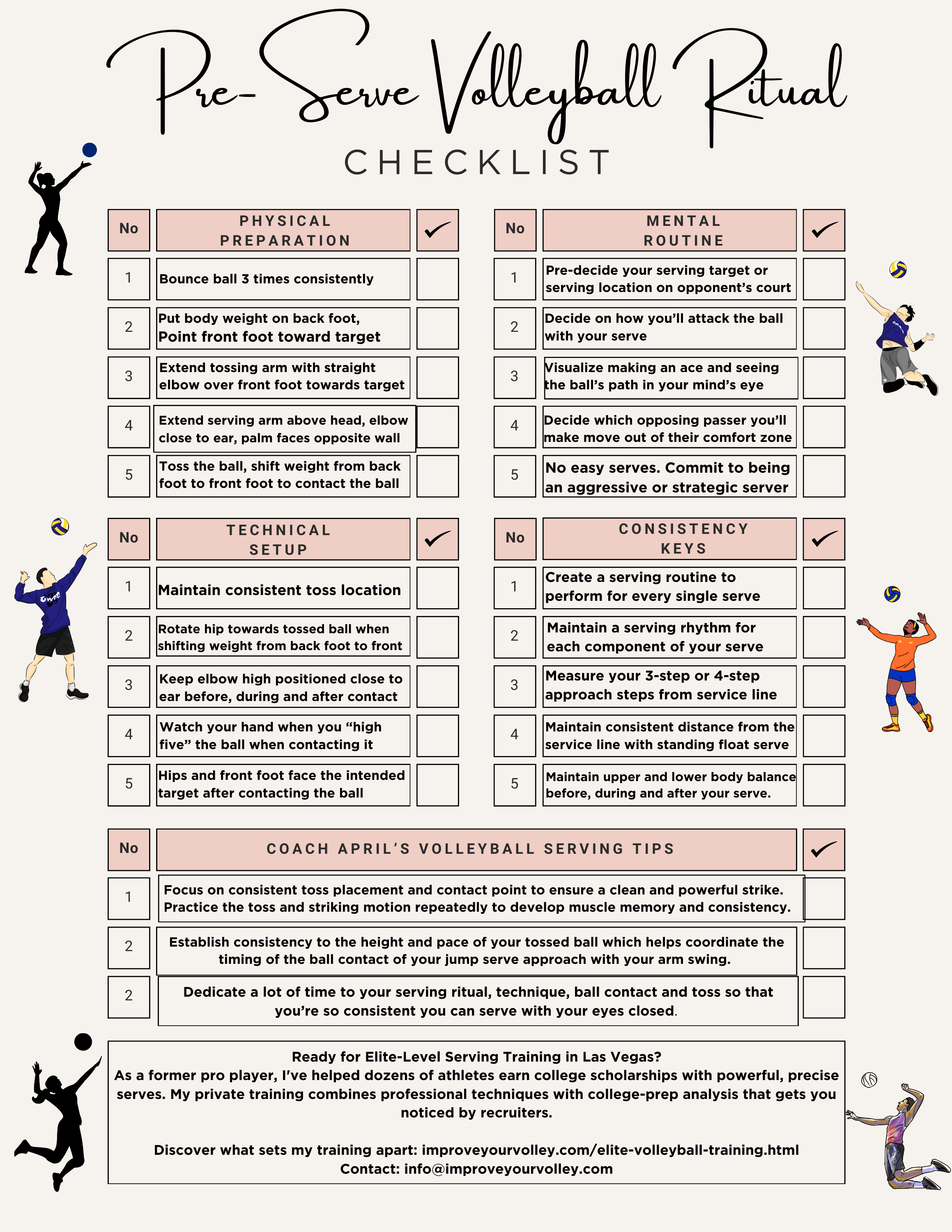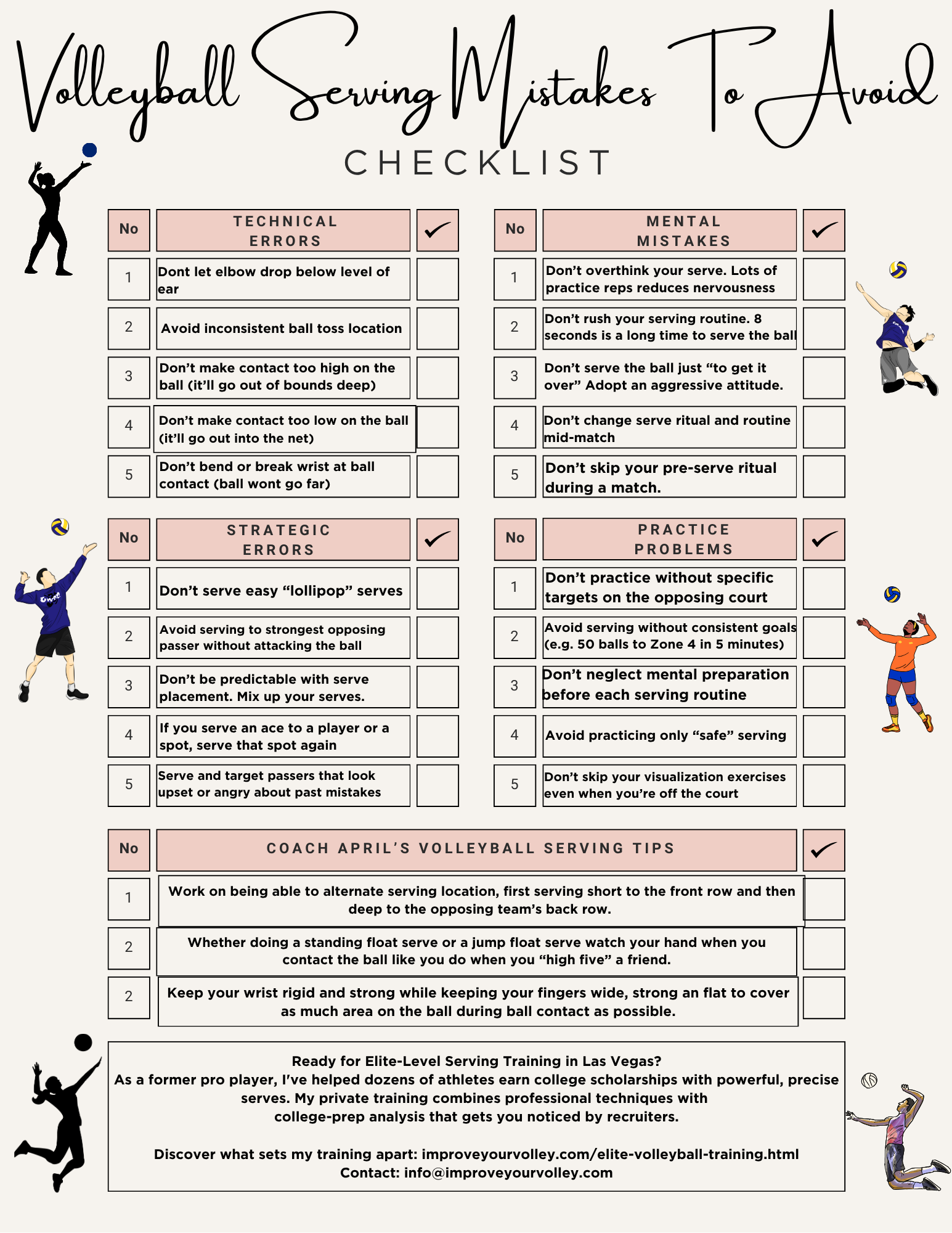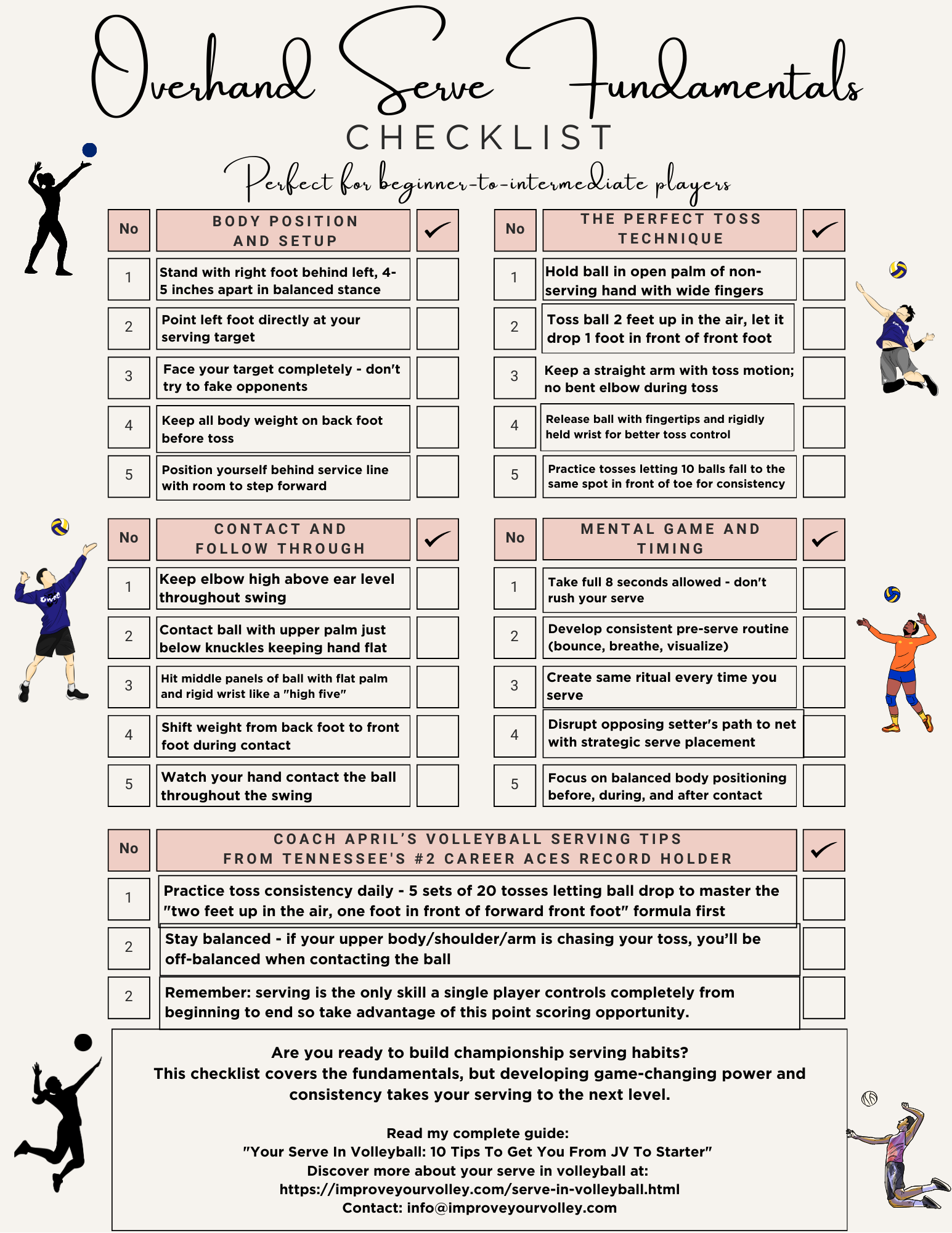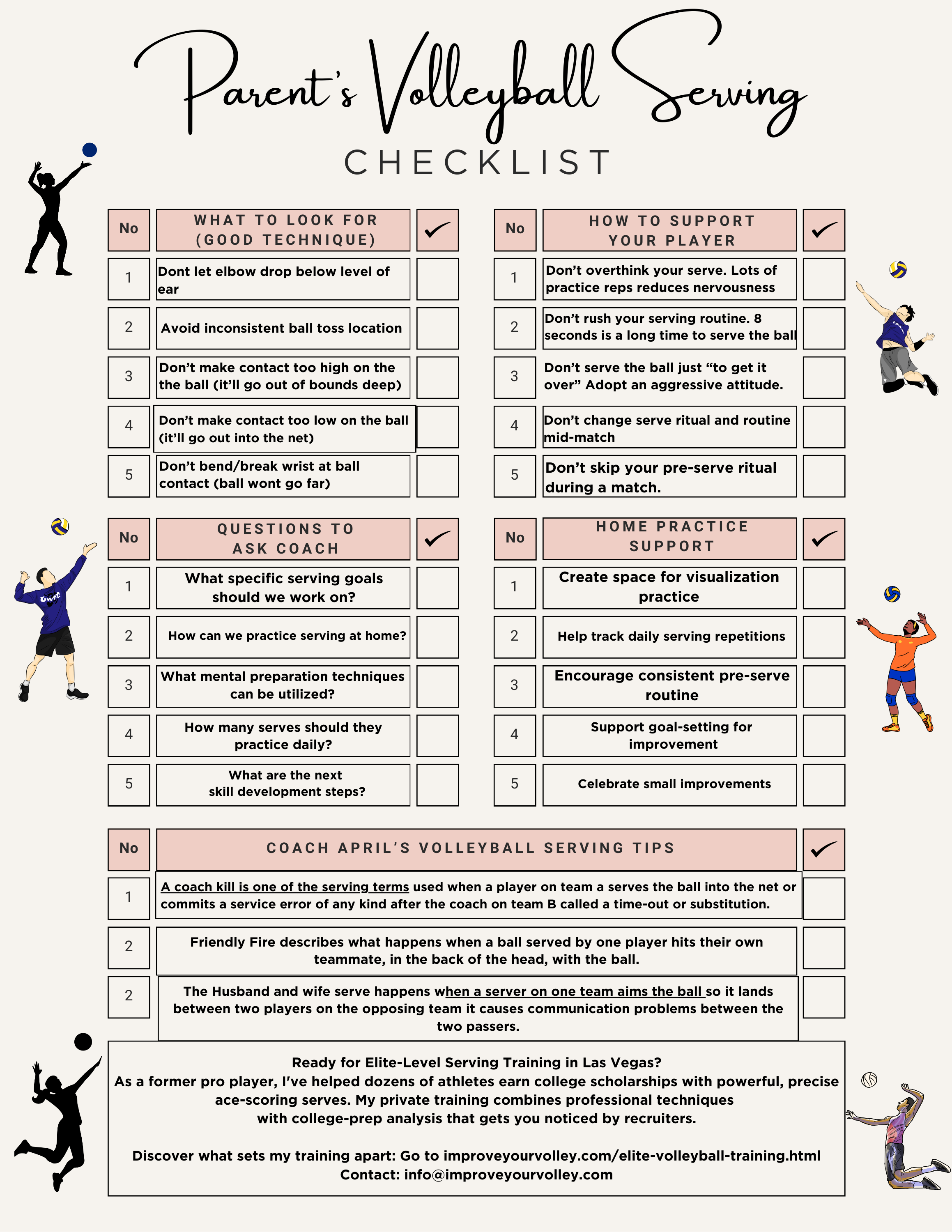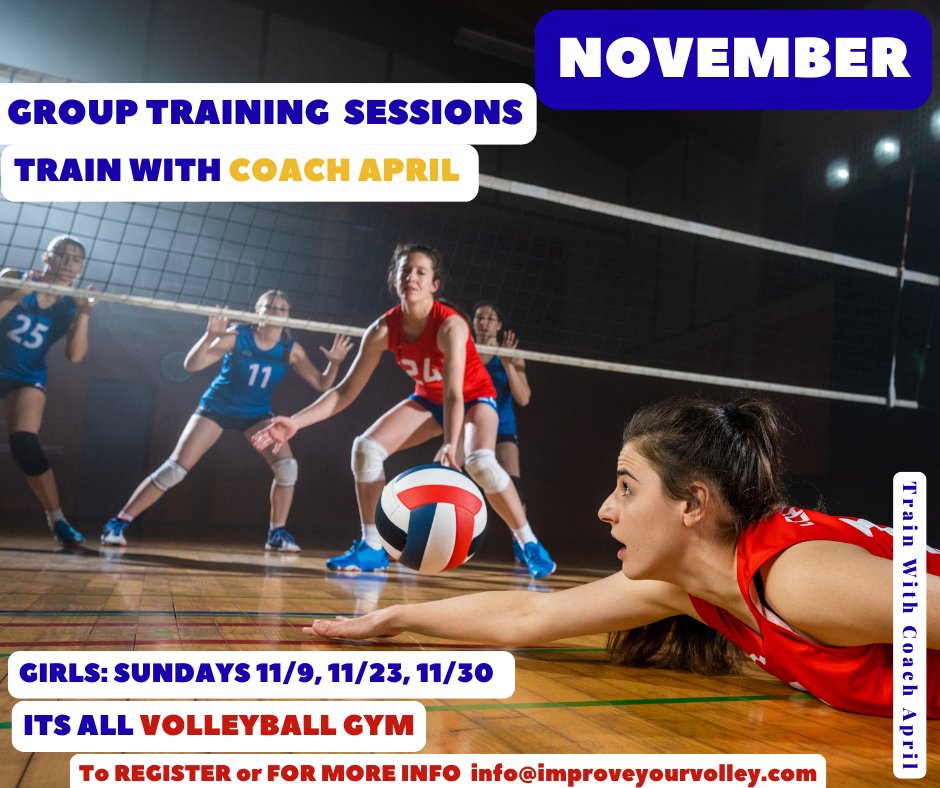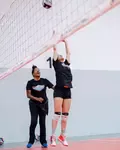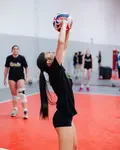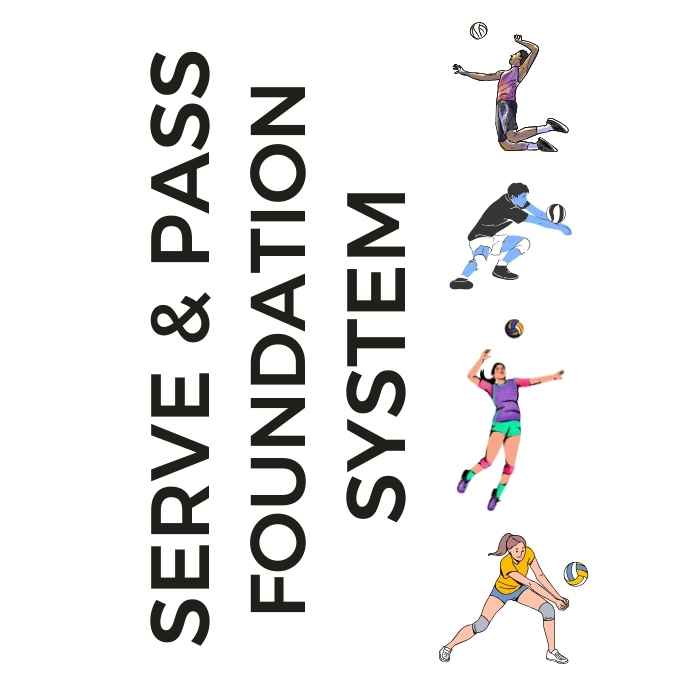
Serve + Pass Foundation System: The Complete Skills Arsenal The two-skill mastery system that transforms inconsistent players into the athletes coaches build their lineups around. Stop Struggling With The Two Most Important Skills In Volleyball!
- Improve Your Volleyball with Coach April
- Definition of Terms in Volleyball Blocking: Stuff and Read Blocking
- The Service Volleyball Definition: Explore the Basics About Serving In
The Service Volleyball Definition: Explore the Basics About Serving In
Power up your volleyball game by understanding the service volleyball definition. Improve your serving technique and learn how to serve after a timeout.
The service in volleyball, also known as a volleyball serve, refers to the act of initiating play by sending the ball over the net to the opposing team's court.
It is the first contact made by a player when their team is in possession of the ball.
In this article, I will explore the service volleyball definition and provide insights on how to effectively serve after a timeout
Take Control: The Power of Your Volleyball Serve
When coaching serving I focus first on improving and performing the fundamental basic serving skills.
I can't emphasize enough that you are the only person who controls the effectiveness of YOUR serve.
Improving your volleyball service technique is the one fundamental skill you can do without the help or intervention of anyone else to score a direct point for your team.
That is very powerful and trust me even many elite players don't take advantage of this unique opportunity.
Serving After a Timeout: Tips and Strategies for Success
The first place to serve after a team calls timeout is In the court
After a team calls a timeout, it is crucial to serve the volleyball effectively to maintain your team's momentum.
Considering the pressure of the situation, here are some tips and strategies to help you serve successfully after a timeout:
1. Take a deep breath and stay focused:
It's natural to feel some pressure after a timeout, but staying calm and composed is key.
Take a deep breath to relax your mind and focus on the task at hand.
2. Prioritize consistency over power:
Focus on getting your serve in the court rather than trying to hit an aggressive shot that may result in an error.
3. Aim for strategic placement:
Consider the positioning of the opposing players and assess any weaknesses or open spaces in their court.
4. Vary your serve:
Mix up your serving techniques by alternating between overhand and underhand serves.
This can keep the opposing team off balance and make it more challenging for them to anticipate your serves.
Are you a tough volleyball server?
As a tough volleyball server, your job is to be comfortable serving anywhere and anyone from behind the service line with pace and precision in order to score points.
When you do your volleyball drills for serving practice you want to do tons of reps to every single one of the six positions on the court.
You want to be able to hit those targets from anywhere behind the service line.
Targets to aim for during your volleyball drills for serving:
-serve seams
-serves the sidelines
serve outside hitters deep in the court
Some players think that being a tough volleyball server means you need to really be sneaky and try and fake out the serve receive by not showing where you are going to serve.
On the contrary I say...let everybody know where you are going to serve.
Face Your Target.
5. Practice proper technique:
Ensure that your serving technique is accurate and consistent.
Remember, after a timeout, the primary goal is to keep your serve in play and maintain your team's momentum.
By incorporating these specific tips on serving after a timeout, the content better addresses the search intent for the keyword "service volleyball definition" and provides valuable guidance for readers looking for information on this topic.
Navigating the Service Zones: Where to Serve the Ball
Click below to read more serving tactics on scoring more points from the service line.
Serve in the Court: The Key to Maintaining Momentum
This may sound funny or obvious but serving a tough ball in the court after a team has called a timeout is not always easy.
If a volleyball team has scored several points in a row and the opposing coach calls a timeout elite athletes always try to follow the Golden Rule "Keep your serve in" after a timeout has been called.
Why?
Because the opposing coach has called the timeout for several reasons ...one of which is to specifically distract YOU the server in hopes of getting you to MISS your serve which can instantly change the momentum of the game.
You keep your team's point scoring momentum ...by keeping your serve...in the court.
Click to Download Your Jump Float Volleyball Serve Mastery Checklist pdf:
🎯Jump Float Volleyball Serve Mastery Guide - $7
Are you attempting jump float serves but lacking the technical precision that creates consistent power and accuracy? Why Struggle with Jump Float Serves When You Could Master Them Systematically?
You'll Get:
Approach and Setup Methods --Master 3-step and 4-step approaches with optimal spacing and ball positioning
Jump and Timing Techniques -Perfect the slow-to-fast acceleration that creates maximum vertical lift and power
Ball Contact Fundamentals Learn the "high five" contact method for consistent float effect and accuracy
Landing and Follow-through Execute safe two-foot landings with proper hip rotation and shock absorption
Click to Download Your Tactical Serving Strategy Checklist pdf:
🎯Tactical Serving Strategy Checklist Guide - $7
Are you serving without strategic purpose while opponents easily run their offense? Why React to Opponents When You Could Be Controlling Them?
You'll Get:
Pre-game intelligence methods --Identify technical weaknesses and poor passing habits during opponent warm-ups
Strategic target selections Master seam serving and zone targeting that creates immediate passing problems
Situational serving tactics Know when to serve aggressively vs. safely based on score and game situation
Mental approach strategies Develop point-scoring mentality and force passers out of comfort zones
Coach April's tactical tips Adjust serving strategy mid-game and target front-row hitters effectively
1-page PDF checklist Convenient format you can print or keep on your device for strategic reference
Click to Download Your Consistent Toss Mastery Checklist pdf:
🎯Consistent Toss Mastery Guide - $7
Are inconsistent tosses sabotaging your serves and forcing you to chase the ball? Why fight your toss when you could master the foundation of every great serve?
Exploring the Technical Aspects of a Volleyball Serve
During my Breakfast Club for College Players summer training for college players in Vegas home for the summer we work on partner jump float serving technique where two servers at a time in two different lines serve behind Zone 1 and Zone 5 to a designated spot on the opposing court.
Pairs work together to get the ball "in" and if one player in the serving pair misses their serve neither of the two score a point for their team.
So no point for the two people serving and no point for the team they represent so the pressure feels like its double the weight.
The more we do this drill the more the server feels the weight of making their serve in.
Let's dig into the technical aspects of a volleyball serve to help you master this fundamental skill:
1. Technique:
A successful serve begins with a proper stance and footwork. Start in a balanced position, with one foot slightly ahead of the other and your weight evenly distributed.
As you prepare to serve, step forward with your non-dominant foot while swinging your serving arm backward.
The ball should pass over the net and into the opposing team's court.
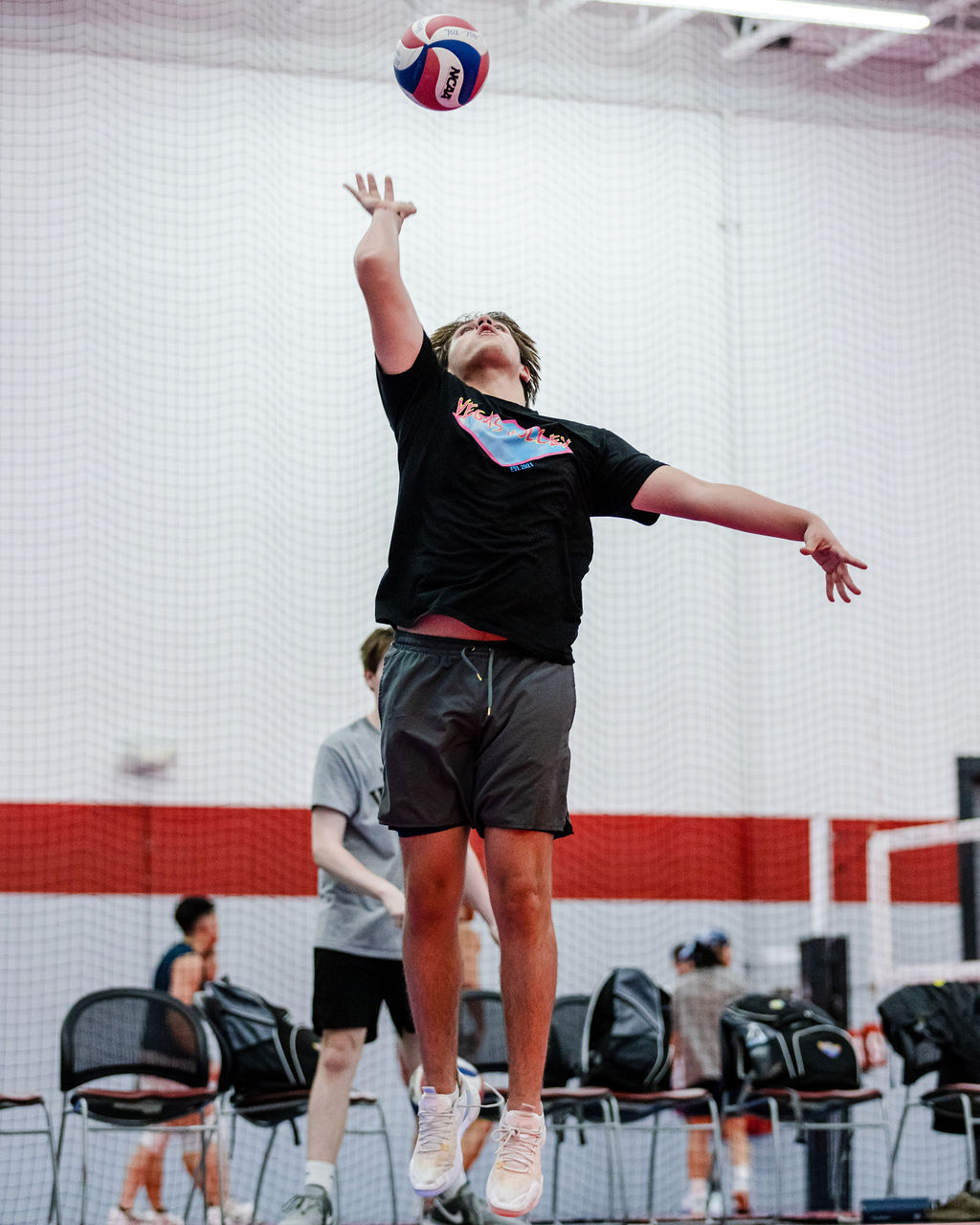 Service Volleyball Definition: There are various types of serves in volleyball, including the float serve, topspin serve, and jump serve. The float serve involves minimal spin on the ball, resulting in an unpredictable trajectory.
Service Volleyball Definition: There are various types of serves in volleyball, including the float serve, topspin serve, and jump serve. The float serve involves minimal spin on the ball, resulting in an unpredictable trajectory.2. Service Zones:
In standard volleyball, there are six zones labeled from 1 to 6, starting from the right back corner clockwise.
The server can choose any zone from which to serve the ball.
3. Serve Types:
The float serve involves minimal spin on the ball, resulting in an unpredictable trajectory.
The topspin serve creates a downward or dipping motion, making it more challenging to receive.
The jump serve incorporates a running start and an explosive jump to generate power and speed.
4. Service Faults:
It's essential to adhere to the rules of serving to avoid committing service faults.
Some common faults include stepping on or over the service line, failure to strike the ball cleanly, serving out of order, or serving before the referee signals to begin play.
These faults result in a lost serve and a point awarded to the opposing team.
Practicing different serve types and minimizing service faults will increase your effectiveness on the court, bring momentum to your team, and contribute to your overall success."
Do You Follow Me on Pinterest?
Follow me on Pinterest Volleybragswag to improve your game even faster!
I share alot of individual, partner and easy-to-do volleyball serving drills we do in class with my followers.
Many of these volleyball practice drills you can do at home by yourself or try at your next practice with your teammates.
If you're a B team or JV player trying to make varsity next year...your goal should be to complete 1000 reps a day of at least three of the basic skills on your own...volleyball passing, serving and setting should be at the top of the list.
Service Volleyball Definition
Where Do You Go From Here?
Your options are:
- You can learn more about Serving by visiting the related links below.
- Follow the suggested reading on our Sitemap page Learning How To Play (Sitemap)
- Or visit the pages in the How to Play Volleyball section in the drop down menu at the top of the page to get started.
- Before leaving this page Say "Hi" to Miss Tattoo the Tiger wearing the #9 jersey below. Miss Tattoo is the starting defensive and serving specialist for the All Beast VolleyBragSwag All Star team.
If your athlete struggles with consistent serve receive, gets subbed out, or is overlooked for playing time—this is the fix you’ve been looking for.

Struggling with passing consistency?
I help talented passers tired of getting pulled from games because of inconsistent serve receive skills BUILD passing confidence without expensive private lessons using the same 3-step system that's helped dozens of my athletes get recruited.
Download my eBook for $17.99 and start building the passing confidence that keeps you on the court—and gets you seen by college coaches.
From Lady Vol to Legend: Coach April Produces Powerful Passionate Players...is that you?
What Are You Looking For?
Click to Download Your Pre Serving Ritual Mastery Checklist pdf:
🎯Volleyball Pre Serving Ritual Guide -
Players! Learn How To Transform Your Serve from Weak to Weapon
Click to Download Your Parent's Volleyball Serving Checklist pdf
🎯Parent's Volleyball Serving Checklist Guide
Parents! Help Your Player Develop Championship Serves (Even If You've Never Played)

Hi there!
Thanks for stopping by. Hope you learned something today that will help you reach your volleyball goals.
Be sure to subscribe to my email newsletter so you can learn more each week!
Stay strong! Stay motivated!
-Coach April

SUSCRIBE to my email newsletter below!
 Click to learn more about the weekly volleyball classes and clinics or email info@imrpoveyourvolley.com for information
Click to learn more about the weekly volleyball classes and clinics or email info@imrpoveyourvolley.com for informationCongratulations to my seven Boys-18s Vegas Volley club players who played in two state championship finals yesterday, the 3A and 5A State champinship finals at Sunrise Mountain High School.
TOURNAMENT CHAMPIONS!
A-1 Vegas Volley VBC
In It To Win It Tournament
May 2 - 4, 2025 Tournament
Gold Medalists
18s Premier Division
Vegas Volleyball's Unsung Heroes: Celebrating Moms with Peace Love Volleyball Shirts
Ready to energize your volleyball mom journey?
Subscribe to my 'Producing Powerful Passionate Peaceful Players' email list above on ImproveYourVolley.com.
You'll receive energy-boosting tips, exclusive insights from me, Coach April Chapple on maintaining momentum in volleyball.
Let's power up the Vegas volleyball scene together!
Recent Articles
-
Volleyball Setting Printables: 6 Checklists + At-Home Drills
Dec 24, 25 02:40 AM
Master volleyball setting with 6 comprehensive checklists. Includes hand positioning, footwork, set types, back setting, jump setting & at-home drills. $27 -
The Volleyball Checklist: Skill Development Systems That Get Results
Dec 24, 25 02:22 AM
Master serving, passing and other basic skills with a step-by-step volleyball checklist from a Tennessee Hall of Famer who trains college-recruited athletes. -
How To Set A Volleyball A Basic Setter Guide To Good Setting Technique
Dec 24, 25 02:07 AM
Want to be a good volleyball setter? I show you how to set a volleyball the way I teach my club players, focusing on hand and body placement and ball contact.
